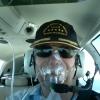Factory Reman or Field Overhaul by Engine Specialists
-
Members Online
- PeteMc
- carusoam
- Rizvon
- siouxpilot77
- Fly Boomer
- ReboTim
- Kirch56H
- C.J.
- Bob Weber
- takair
- PeytonM
- skydvrboy
- SeaLand
- LANCECASPER
- mmcdaniel33
- Sixstring2k
- Justin Schmidt
- jimbgi
- Ron McBride
- Tmooney
- EricJ
- aviatoreb
- 00-Negative
- TerryDubYa
- Shadrach
- Beechbum
- laytonl
- Rmfriday
- hammdo
- 47U
- Rmnpilot
- whiskytango
- Planegary
- toto


Recommended Posts
Join the conversation
You can post now and register later. If you have an account, sign in now to post with your account.